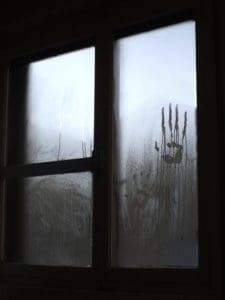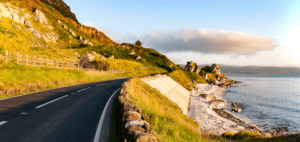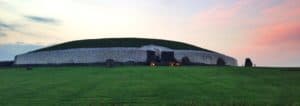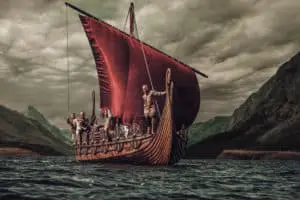Island Mystique: Unveiling the Lore of the Aran Islands – A Journey into Celtic Legends
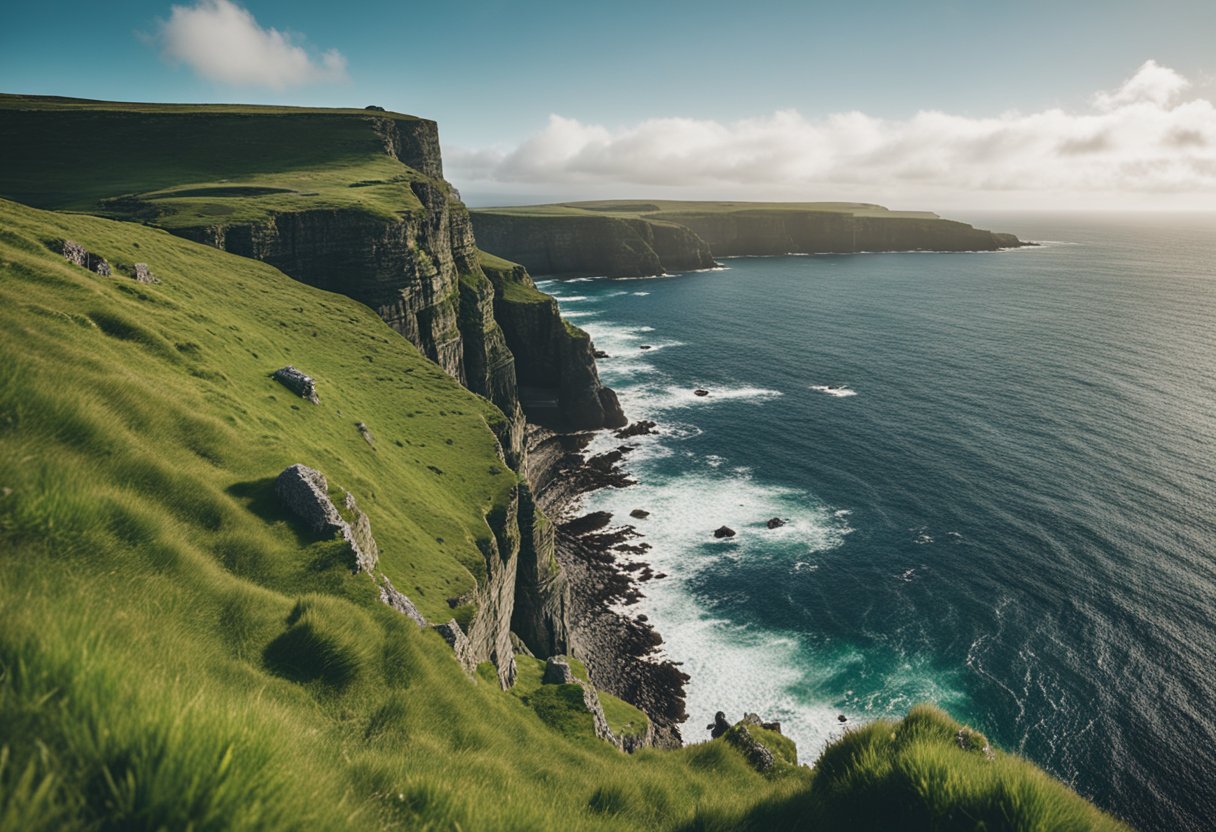
Updated On: March 16, 2024 by Maha Yassin
Nestled off the west coast of Ireland, the Aran Islands are a trio of Gaeltacht isles steeped in ancient history and rich cultural traditions that continue to captivate visitors. Known for their rugged beauty and enduring allure, these islands harbour a mystique as deep as the Atlantic waves crashing against their limestone shores. We’re drawn to explore the fabric of legends woven into the tapestry of the Aran Islands, where each stone and rune seems to hold a story from a bygone era.
Stepping onto these islands, one can’t help but feel like they’ve been transported back in time – to a place where the Irish language ebbs and flows as freely as the tide and age-old customs are preserved with pride. The islands’ inhabitants, guardians of this Celtic treasure, have lived in harmony with the unforgiving yet breathtaking landscape that defines the Aran Islands. Their way of life, a blend of past and present, invites us to discover what makes this corner of the world uniquely compelling.
Geographic Overview
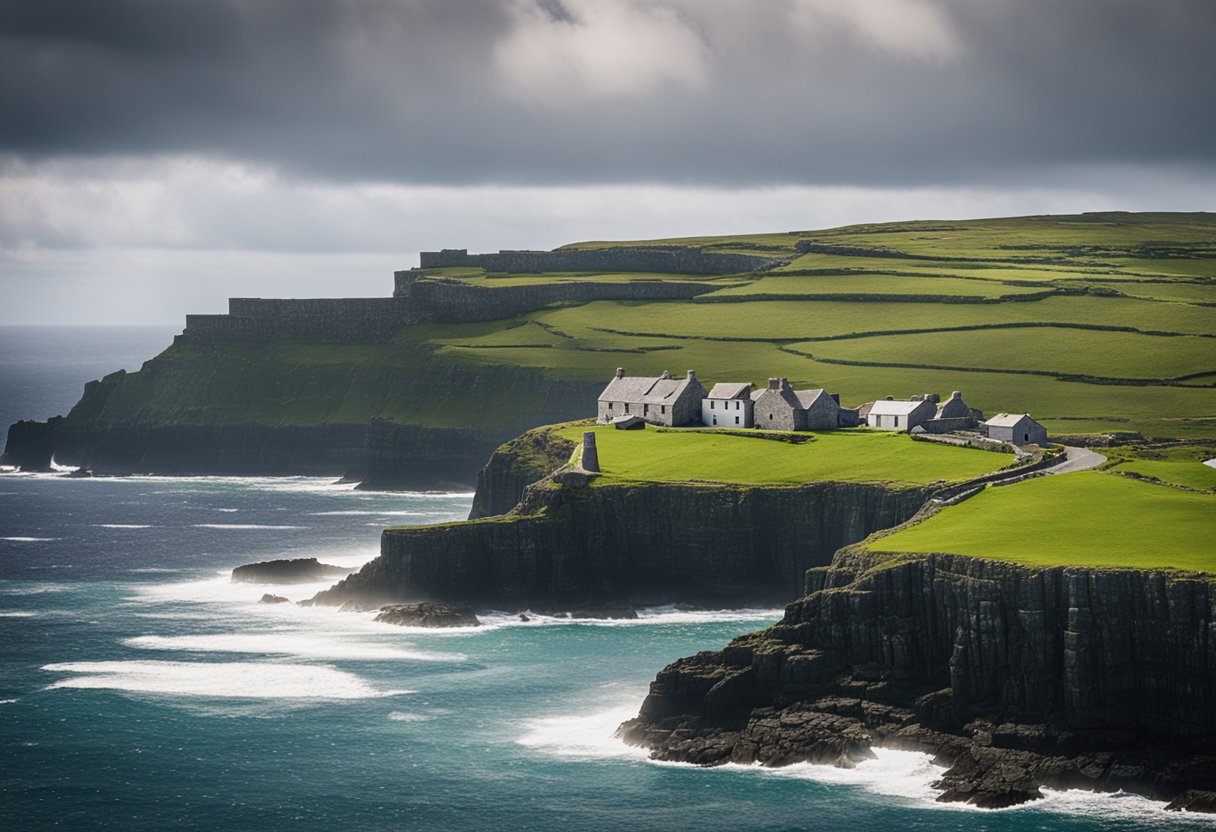
This section explores the Aran Islands, a place of remarkable natural beauty and a rich tapestry of Irish tradition. Here, the rugged landscapes meet the mighty Atlantic, shaping the lives and customs of its inhabitants.
Islands at a Glance
- Inis Mór: The largest island, known for its ancient fort, Dún Aonghasa, perched on dramatic cliffs.
- Inis Meáin: The middle island, an intimate retreat steeped in literary history and cultural preservation.
- Inisheer: The smallest island, with a charming landscape that captures the essence of traditional island life.
Landscapes and Natural Beauty
In the shadow of Galway on the mainland, the Aran Islands sit nestled in the wild Atlantic Ocean just at the mouth of Galway Bay. Inis Mór boasts some of the cliffs most iconic to this region, with sweeping views that invite a deep breath of salty air. The landscape across all three islands is a stark and enchanting mix of limestone pavements and verdant pastures, home to a diverse array of flora and fauna.
Climate and Seasons
The climate of the Aran Islands reflects their position amidst the churn of the Atlantic Ocean. Winters can be harsh, with gales sweeping in from the sea, while summers bring a milder ambience that encourages exploration of beaches and landscapes. Each season paints the islands in different hues—from the wildflowers of spring to the russet tones of autumn—shaping the nature and traditions of island life through the year.
Historical Tapestry
As we uncover the rich historical tapestry of the Aran Islands, we find a convergence of early Christian influence, enduring legends, and iconic landmarks that define the island’s heritage.
Early Christian Influence
The profound impact of Christianity on the Aran Islands is visibly etched into the landscape, with historical sites like the Seven Churches and Killeany Monastery. Established by early Christians, these sites illustrate the devout monastic culture that thrived on the islands. Monks, seeking a reclusive existence, were drawn to this remote setting, where they solidified their faith and left a permanent mark on the island’s culture.
Legends and Folklore
Irish lore and folklore breathe mystical life into the fabric of the Aran Islands. Tales such as the Banshees of Inisherin emerge from the very stones of the forts, evoking images of a time when mystical beings were thought to roam freely. The islanders’ stories have been passed down through generations, becoming integral to our collective heritage.
Iconic Landmarks
Structured within the rugged terrain, the Aran Islands host legendary stone forts like Dún Aonghasa and the lesser-known Black Fort. These ancient ruins, steeped in history, are testaments to the islanders’ ingenuity and adaptability. O’Brien’s Castle and Synge’s Chair are also among the must-visit historical sites, offering tangible connections to past civilisations that once called these islands home.
Cultural Riches
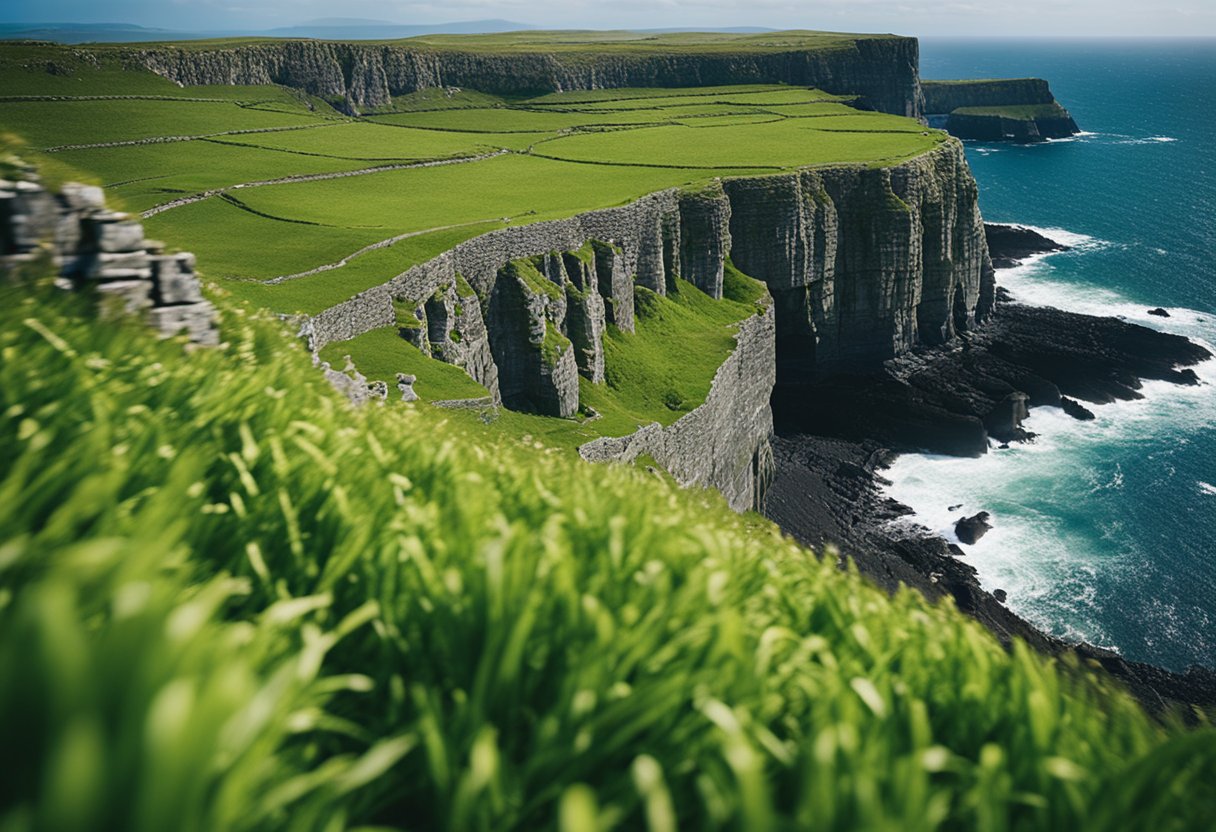
Our exploration of the legendary Aran Islands reveals a tapestry of cultural wealth, woven deeply with Irish language and tradition, alongside a vibrant arts and literature scene, culminating in rich festivities and traditions.
Irish Language and Tradition
The pulse of Gaeltacht life beats strongly here, where the Irish language (Gaelic) flourishes among the locals. As a bastion of Celtic heritage, the inhabitants of the Aran Islands are custodians of an ancient tongue that echoes through their daily lives and interactions, keeping the language vibrantly alive.
Arts and Literature
These rocky shores have long inspired artists and writers, most notably John Millington Synge, whose celebrated work, “Riders to the Sea,” encapsulates the raw spirit of the islands. Moreover, the legendary Aran knitters craft intricate patterns steeped in tradition—a tangible narrative of island history and life and a testament to the rich tapestry of local artistry.
Festivities and Traditions
Our calendar here is dotted with celebratory markers, where traditional music spills from the pubs, and the air is charged with the jubilance of Irish music and dance. In these gatherings, we find the soulful expression of our island’s identity—a confluence of the past and present, brimming with timeless revelry.
Contemporary Island Life
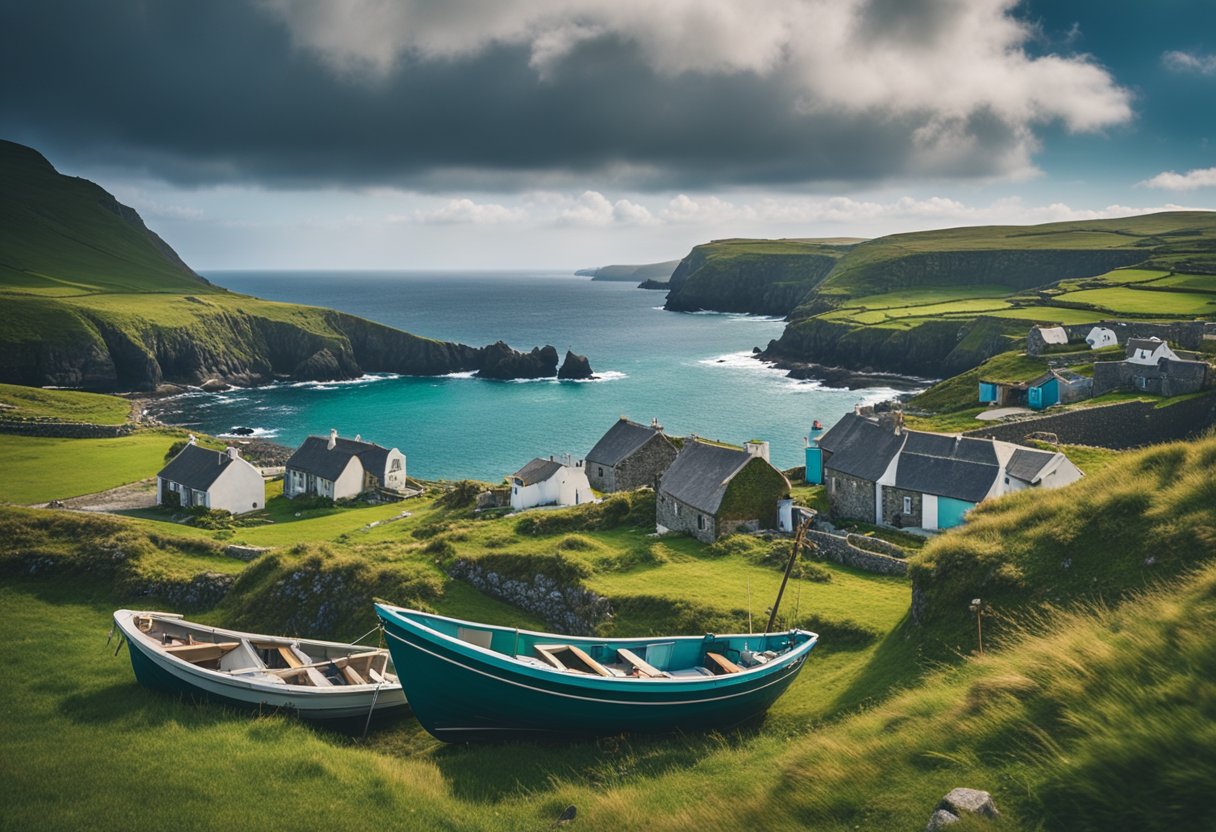
In the Aran Islands, the thread of tradition weaves through the fabric of daily life, uniting the past with the present. Here, we explore the nuances of living on these rugged islands and the industries that sustain their inhabitants.
Living on the Islands
The Aran Islands, located off the west coast of Ireland, offer a unique lifestyle deeply rooted in Irish culture and tradition. The islanders maintain a strong community spirit with a population that embraces Irish hospitality. Despite the challenges of isolation from the mainland, locals find joy in the simplicity and natural beauty of their surroundings. The islands represent a bastion of the Irish language, with Gaelic spoken fluently alongside English.
Economy and Occupations
Economic life on the Aran Islands is predominantly driven by fishing, farming, and tourism. Fishing, once the lifeblood of the islands’ economy, continues to be a vital occupation. Islanders also engage in farming, focusing on maintaining cattle and sheep grazing land. However, the significance of farming has evolved, with a diversifying economy.
Tourism has boomed, showcasing the islands’ dramatic landscapes and rich cultural heritage. Visitors are drawn by the unique experience of island life and traditional crafts, which contribute to economic sustainability. Kelp farming has also emerged as a niche industry, harnessing the rich marine resources surrounding the islands.
Connectivity and Transport
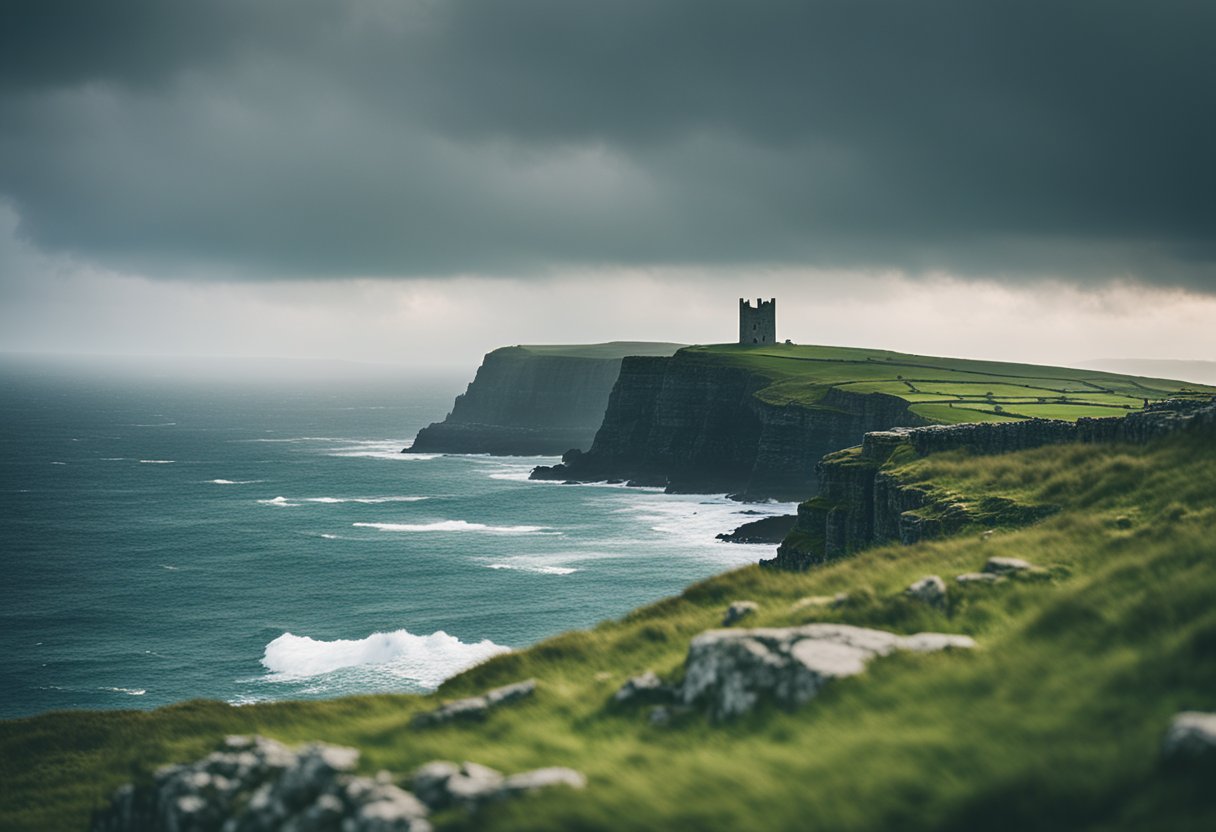
In unveiling the lore of the Aran Islands, we recognise the pivotal role of transport and connectivity. These factors support the community’s way of life and allow visitors to experience the islands’ rugged beauty and deep-rooted culture.
Travel to and From the Islands
To reach the Aran Islands, one may travel from the mainland via ferry services operating from Doolin in County Clare and Rossaveal in County Galway. The islands comprise Inishmore, the largest; Inishmaan (Inis Meáin), the second-largest; and Inisheer, the smallest. Aer Aran provides air travel options, facilitating quick transfers, weather permitting. Our journey might start at:
- Galway to Rossaveal (approximately 1 hour by bus, then 40 minutes by ferry).
- Doolin to any island (approximately 30 minutes to Inisheer, the closest island).
Navigating the Islands
Once we arrive, transport on the islands themselves is charmingly simple. Bike rentals are popular amongst tourists and locals, offering a leisurely pace to uncover the islands’ mysteries. To navigate the narrow lanes and scenic pathways, cycling offers an immersive way to appreciate the picturesque landscape. For those less inclined to pedal, a handful of minibuses provide guided tours with local insights. Here’s a brief outline of our options:
- By Bike: Explore at your leisure, which is ideal for solo travellers or families.
- Minibus Tours: Local drivers share their knowledge, perfect for those seeking guided explorations.
Natural Wonders and Attractions
The Aran Islands offer arresting natural wonders and human history that captivates the imagination. We reveal the geographical splendours and historical treasures, ensuring a journey rich with discovery.
Notable Geographical Features
Cliffs: The landscape of the Aran Islands is marked by dramatic cliffs that offer breathtaking views over the Atlantic Ocean. Notably, the Cliffs of Moher, while not on the Aran Islands themselves, are visible from the islands on a clear day, connecting the essence of these geological formations.
The Burren: The Burren’s lunar-like limestone pavement extends to the northeastern corner of the Aran Islands, showcasing rare plants and ecosystems that arise from this unique karst landscape. This area is a natural wonder that encapsulates the stark beauty of the islands.
Historic Sites and Monuments
Dún Aonghasa: Perched on a cliff edge, the prehistoric fort of Dún Aonghasa represents a heritage of human resilience and design. This semicircular stone fort commands strategic views and an air of ancient mystery that resonates with visitors.
Black Fort: Lesser-known but equally compelling, the Black Fort (Dún Dúchathair) offers insights into the island’s history through its enigmatic remains that withstand the test of time.
O’Brien’s Castle: The ruins of O’Brien’s Castle stand watch over Inishmore, telling stories of familial leadership and social evolution over the centuries.
Our exploration of the natural wonders and historic monuments on the Aran Islands gives us an appreciation for the intersection of natural beauty and cultural achievements that define this storied region.
Leisure and Adventure
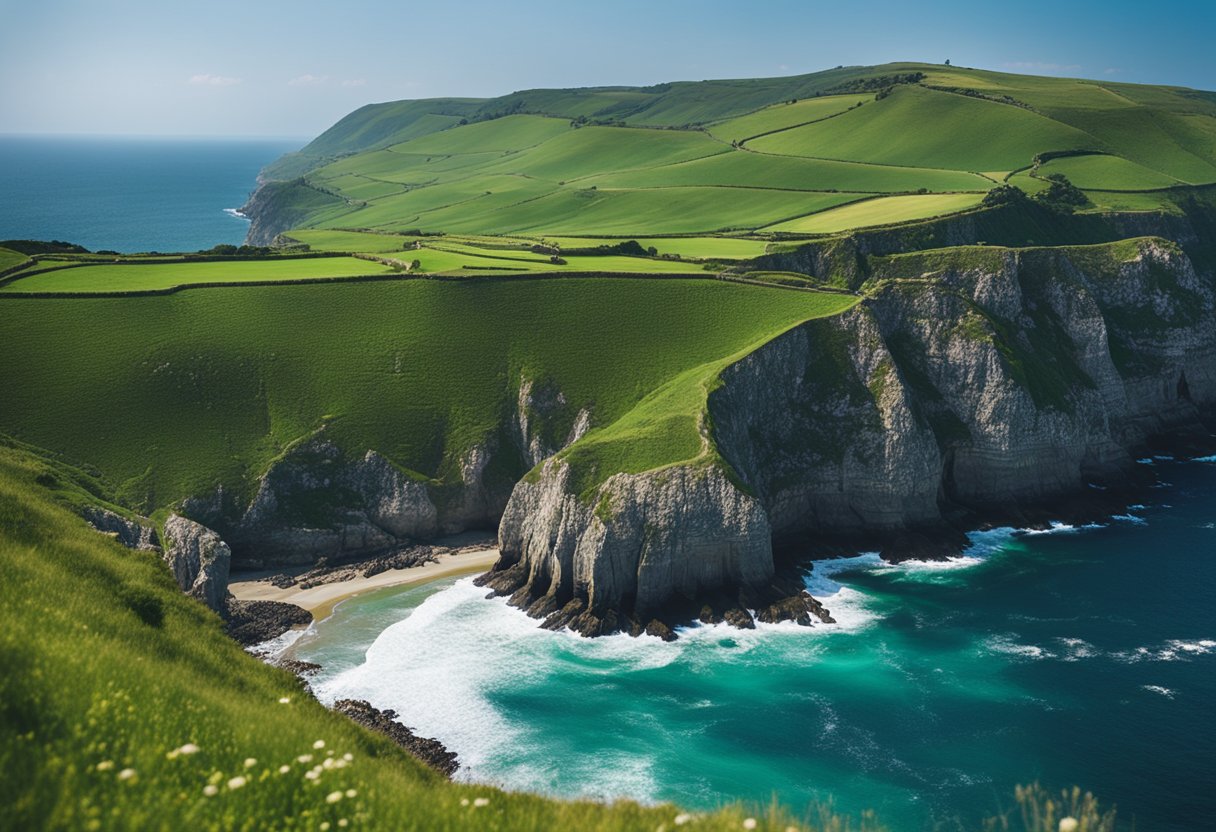
As we explore the Aran Islands, we’re greeted by an alluring combination of serene landscapes and exhilarating outdoor pursuits. Whether you’re seeking peaceful communion with nature or the adrenaline rush of adventure sports, these islands provide an idyllic backdrop for leisure and adventure.
Outdoor Activities
The rugged terrain and sweeping coastal views of the Aran Islands beckon hikers and explorers to traverse their trails. Embarking on a hike uncovers the islands’ stunning landscapes and natural beauty and immerses travellers in a sense of solitude and discovery. Amidst this rural scenery, the winding paths lead to ancient forts that stand as silent witnesses to the islands’ storied past.
For water enthusiasts, the clear Atlantic waters surrounding the islands offer ample opportunities such as kayaking and swimming. Kayaking allows us to navigate the islands’ intriguing marine geography, revealing hidden coves and secluded beaches only accessible from the water.
Wildlife and Marine Life
The Aran Islands are home to various wildlife, particularly several seals and marine life. These marine mammals can often be spotted lounging on the rocky shorelines or bobbing in the coastal waters. Dedicated wildlife-watching trips allow us to observe these creatures in their natural habitat, ensuring a respectful distance for a sustainable encounter with nature.
Birdwatchers will also find a treasure trove of avian species, from cliff-nesting seabirds to rare migrants that pause here on their journeys. The islands offer a vital sanctuary for these creatures, and the sight of seabirds in flight against the backdrop of the Atlantic is genuinely captivating.
In these islands, where the whisper of the ocean is ever-present, we find a rare blend of tranquillity and adventure that appeals to the soul of every traveller.
Island Services
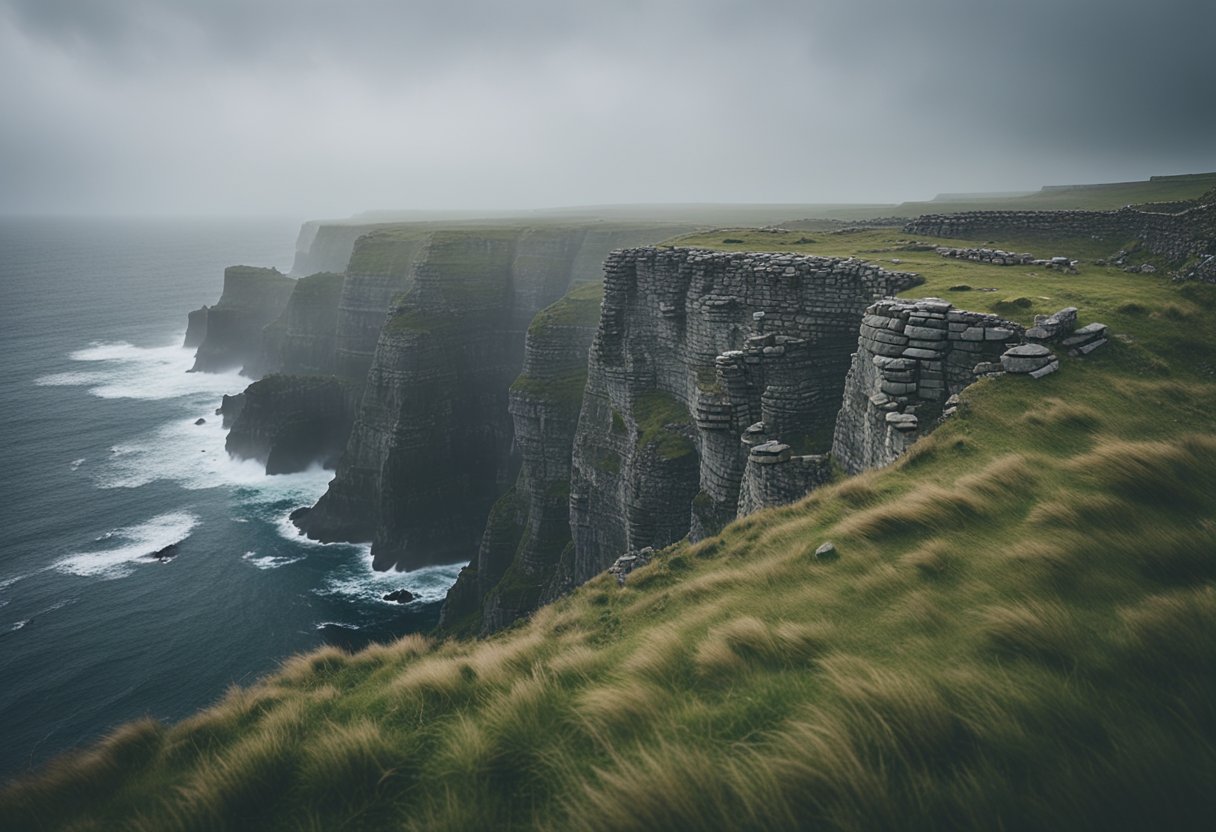
When visiting the Aran Islands, guests can expect services tailored to make their stay comfortable and enjoyable, from convenient transportation options to wonderful accommodation and dining experiences.
Accommodation Options
We take pride in our selection of accommodations, catering to various preferences and budgets. Travellers can choose from cosy bed and breakfasts renowned for their Irish hospitality to private holiday homes offering a more secluded retreat. The warmth and welcoming nature of the island’s hosts is intrinsic to the experience, ensuring that every guest feels at home.
- Bed and Breakfasts (B&Bs): Intimate settings, often family-run, providing a personal touch.
- Holiday Homes: Ideal for families or groups looking for self-catering options.
- Hostels: Budget-friendly, offering basic facilities for travellers.
Dining and Cuisine
The Aran Islands excel in serving traditional Irish cuisine, emphasising fresh seafood and local ingredients. Visitors can indulge in a culinary journey at the various eateries, ranging from charming cafés to reputable restaurants overlooking scenic views.
- Seafood Restaurants: Specialising in local catches from the surrounding waters.
- Traditional Pubs: Offering hearty meals accompanied by live Irish music sessions.
- Cafés and Coffee Shops: Perfect for a light snack or a relaxing tea break.
Our service landscape is designed to provide visitors with a seamless experience, allowing them to immerse themselves in the peacefulness and mystique of the islands while enjoying the comforts of modern-day hospitality.
Planning Your Visit
When embarking on an adventure to the Aran Islands, it’s essential to consider the best travel period and how to enhance your journey with guided tours and experiences. These enchanting isles offer a richer experience when explored with knowledgeable locals.
Best Times to Travel
The most favourable time to visit the Aran Islands is from April to September, when the weather is mild, and the landscape is in full bloom. Travelling during these months ensures that you experience the islands’ impressive cliffs and rugged shores under the best conditions. Ferries to the islands are more frequent in these seasons, and the chance of them being cancelled due to rough weather is minimal. Accommodation options such as bed and breakfasts and small hotels are more readily available, but it’s wise to book in advance, especially in the peak of summer.
Guided Tours and Experiences
To fully immerse ourselves in the lore and beauty of the Aran Islands, we recommend partaking in guided tours. These may range from a full-day Cliffs of Moher & Burren tour to specific Aran Islands day trips, often including a cruise allowing for splendid views from the water. For those keen on the islands’ unique stone walls and historical sites, local experts provide invaluable insight into the past and present of island life. Regarding getting around the islands, options include minibus tours, bicycle rentals, or pony and trap rides for a traditional twist.
Environmental Conservation

In our quest to cherish the natural splendour and cultural tapestry of the Aran Islands, we lay great emphasis on environmental conservation. The balanced preservation of our unique heritage and the promotion of sustainable tourism practices ensures that the magic of these islands—their landscapes, culture, and traditions—continues to thrive.
Protection of Cultural Heritage
Aran Islands’ Heritage: The islands’ stark beauty and cultural richness are intrinsically tied to their environment. Our conservation efforts focus on safeguarding the stone forts, thatched cottages, and age-old traditions representing our invaluable heritage. We work tirelessly to maintain the fragile ecosystems supporting local flora and fauna, ensuring they coexist with the historical sites that dot our verdant landscape.
- Cultural Practices: Traditional crafts and the Irish language (Gaeilge) are pillars of our identity. By protecting natural resources, we also guard the heritage that shapes our everyday life. Unique island skills, from knitting the iconic Aran sweaters to stone wall building, rely on the raw materials provided by our generous environment and are an integral part of our legacy.
Sustainable Tourism
Tourism’s Footprint: Tourism is undoubtedly a lifeline for the Aran Islands, yet it requires careful management to remain sustainable. We encourage responsible travel, where visitors are mindful of their impact on nature and local culture. Measures we’ve taken include limiting vehicle use and promoting eco-friendly tours that allow visitors to revel in our scenic beauty without leaving a destructive imprint.
- Tourism & Community: It’s not just about the landscape—it’s about the people. We urge our guests to engage with the islanders, discover our way of life, and contribute to our economy through respectful participation in our cultural experiences. By opting for local guides and staying in family-run accommodations, tourists directly support the communities that maintain the very essence of the Aran Islands.
Through our collective efforts, we’re not just protecting a set of islands—we’re preserving a way of life. These actions ensure that the Aran Islands’ unique blend of nature and heritage can be appreciated for generations, making the islands a vivid example of heritage and natural conservation in harmony.
Frequently Asked Questions
This section addresses some of the most intriguing inquiries about the Aran Islands, providing historical, literary, and cultural insights.
What historical insights do the old monasteries on the Aran Islands provide?
The ancient monasteries on the Aran Islands serve as key witnesses to early Christian monastic life in Ireland. Their ruins offer a tangible connection to monks’ spiritual and ascetic lives during the early medieval period, revealing the islands’ role as centres of religious learning and sanctity.
How are the Aran Islands featured in Irish literature?
Irish literature often paints the Aran Islands as a bastion of Gaelic culture and language, a theme reflected in works such as Synge’s ‘The Aran Islands’. These texts provide an in-depth look at island life and capture the essence of the island’s rugged beauty and enduring traditions.
What is the significance of the name ‘Inis Mór’ in the context of the Aran Islands?
‘Inis Mór’ translates to ‘Big Island’, reflecting its status as the largest of the Aran Islands. This name underscores the island’s historical and cultural importance, home to ancient sites such as Dún Aonghasa, which draws visitors worldwide to marvel at its historical splendour.
Can you describe the unique aspects of the Aran Islands that distinguish them from other Irish islands?
The Aran Islands stand out for their geological formations, with a limestone karst landscape paving the way for a unique terrain. Additionally, the islands maintain a strong hold on traditional Irish culture, which is visible in the locals’ everyday lives and the use of the Irish language.
How is the heritage of the Aran Islands reflected in the traditional dress and customs observed there?
The heritage of the Aran Islands is woven into the fabric of the iconic Aran jumper. This traditional dress, known for its distinctive patterns and customs, such as festivals and storytelling, continues to play a pivotal role in preserving and celebrating the islands’ unique cultural identity.
What relationship, if any, exists between the Aran Islands and Scotland regarding cultural or historical connections?
Cultural threads bind the Aran Islands to Scotland, particularly through the shared Gaelic heritage. Despite being geographically separate, both regions exhibit similarities in language, folklore, and music, reflecting a mutual Celtic legacy that spans the Irish Sea.



